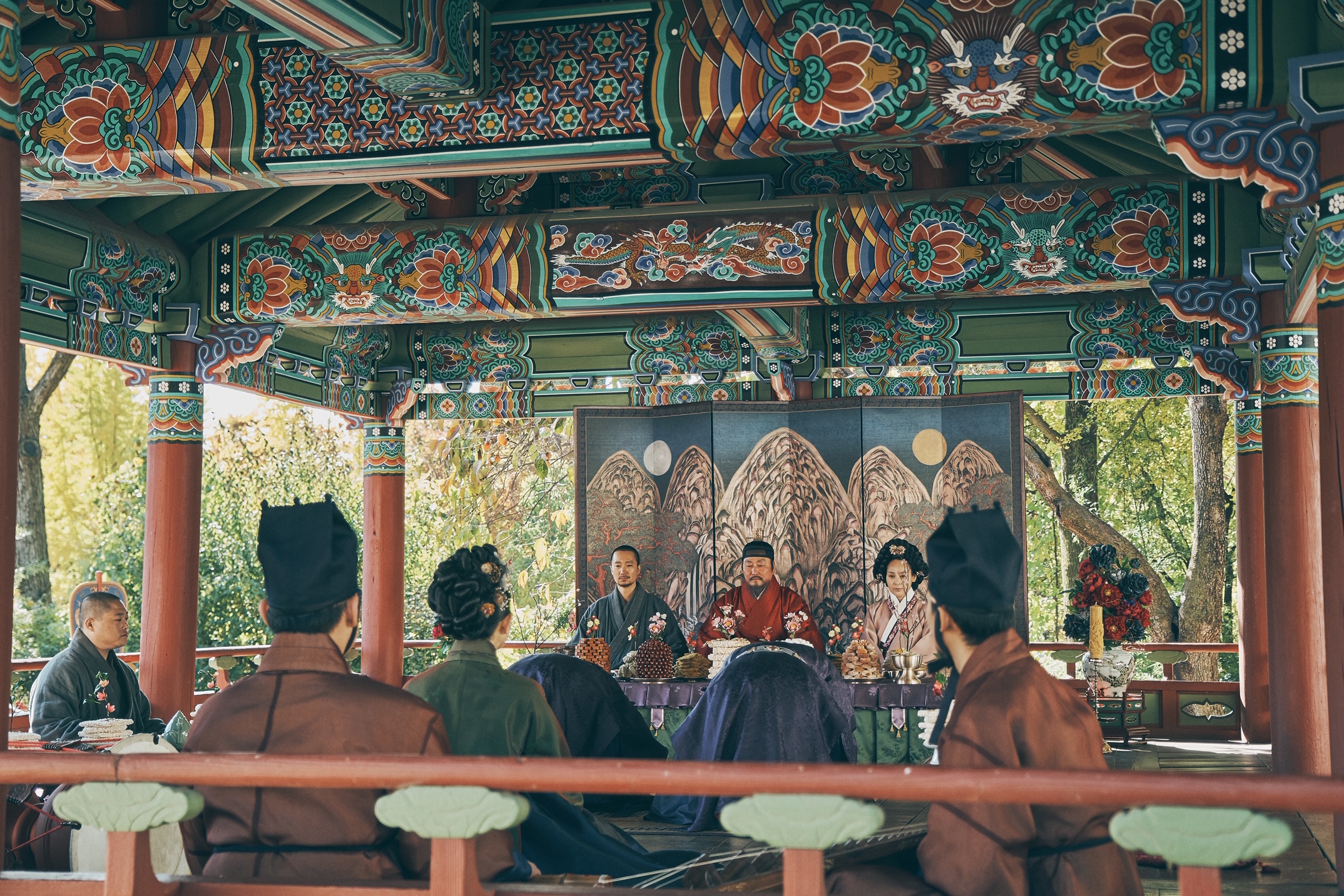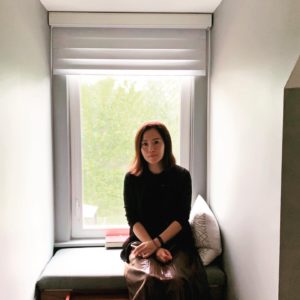
It was Minhwa magic that Jae-eun Chung captured in the historical drama “The King’s Letters.”
She painted mountains with both the sun and the moon overhead in an ethereal horizon. The Korean film, which premiered in July, was a richly textured cinematic narration of King Sejong the Great who gave his people the Korean alphabet hangul as part of his cultural legacy.
Scenes in the trailer provided a glimpse of the different settings, enhanced by painted screens made in the tradition of Korean folk art. These were done by Chung, an artist who sometimes lives in the Philippines, and is known in local circles as the wife of US Ambassador Sung Kim.
Chung’s accomplishment might have gone unnoticed had the American diplomat not given the reason for his spouse’s absence on a few occasions. When he explained that she was working on commissioned works in Korea, her career as an artist became known in Manila circles.
“I actually don’t consider myself an artist yet,” she says. “I am just a person who loves painting and this has led me to see and experience another world within my lifetime.”
The famous art director Ryu Seong-hie, winner of the 2016 Vulcan Award at the Cannes Film Festival, had seen some of her works in an exhibit. Someone from Seong-hie’s team contacted her through the gallery and asked if she could create five paintings for the very first film on the life of the revered leader. She accepted the commission.
“It is a period drama about the creation of the Korean language,” Chung says. “I painted four pieces that were displayed as folding screens for the character of the Chosun dynasty king, while one piece served as a floral folding screen for the queen.”
Inspiration
She stayed in Korea to work on the screens. “When I’m in Seoul, I’m able to concentrate more and feel more productive. I’m also further inspired by the environment in Seoul.”
Chung majored in fine arts but in her senior year in college, she switched to fashion design. “I knew it would be hard to support myself as an artist,” she says of the shift.
After she graduated, she received a scholarship from a fashion company where she worked briefly before getting married.
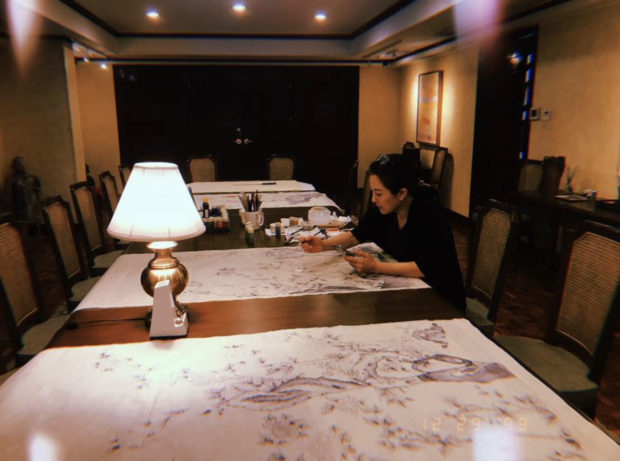
“Although I studied fine arts, my newfound interest lay in Korean traditional paintings. I began attending lectures and found an art studio with a great teacher. She opened a new path for me, and so my career began.”
What she does now is a reinterpretation of Minhwa, a genre of Korean traditional painting with refinements lending a contemporary context.
“It includes a reimagining of colors and formats,” she says. She works with bunchae, the powdered pigment used for Korean traditional paintings, and paints on special lacquered paper made by Korean artisans.
Creative process
The process of creating begins with research and studying old artworks. She visualizes the composition before sketching it and then transfers the sketch to the lacquered paper. Only then does the actual painting commence.
During the Chosun/Joseon dynasty, this specific type of painting with the sun, moon, and five peaks was reserved for the king. It represented the cosmos, all the land and water to which the king’s power and superiority were attributed.
“I painted four different versions, experimenting with different colors and shapes. I also painted a floral folding screen of peonies for the queen’s room. The five pieces took about four months to complete.”
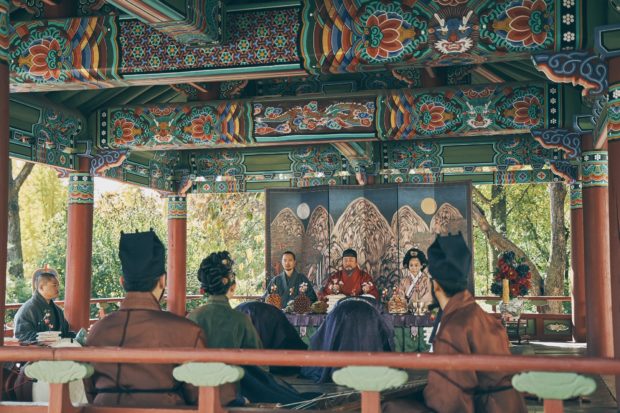
Growing up an only child, Chung is convinced this is why she paints and reads a lot. “I know how to be by myself and express myself through individual activities,” she says.
Her first artwork was an oil painting completed in fifth grade. “I was very excited because it was put on display in our school.”
She admires Frida Kahlo who “persevered and continued to paint through all her pain and hardships.” She also mentions Chun Kyung-ja. “Her life was tragic in some ways, especially toward its end, but I admire her talent, style and passion as an artist.”
Family time
Besides working on her art, Chung spends time reading, cooking, exercising, exploring places and enjoying the company of her family.
“My family is one of my greatest accomplishments,” she says. “Time spent with the family makes me happy. Laughter and humor are central to my family, and I love making them laugh, whether with me or at me.”
As a wife, she has learned to adapt to the demands of the diplomatic life. “Supporting my husband throughout his career includes moving around quite a bit. I feel that I’m resilient in the sense that I can adjust to and settle down in different settings with different cultures and peoples.”
The Kims have been married for 26 years and the regard for her husband is apparent when she speaks of him. “He’s a great, great father. I think he’s also a great writer, and I hope he writes his own book one day to share his experiences with young public servants. Overall, I just think he’s a very decent human being, not that I’m biased,” Chung says with a smile.
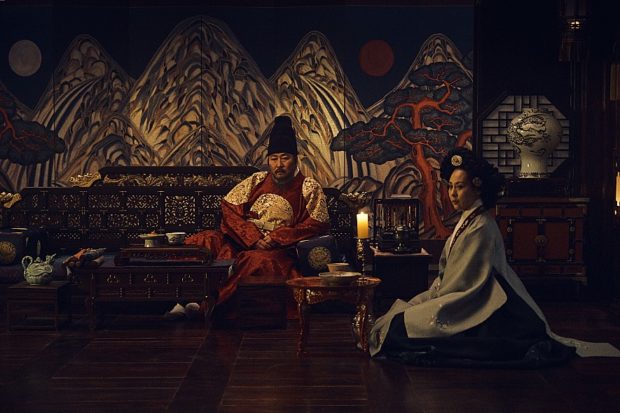
While having achieved a happy home life brings much personal satisfaction, she looks ahead with expectancy at the future.
“I hope that even as I age, I will continue to learn and grow with grace and gratitude.”
She pauses momentarily and adds with serene certainty, “I would like to establish myself in the art world, standing proudly alongside my creations.” —CONTRIBUTED

